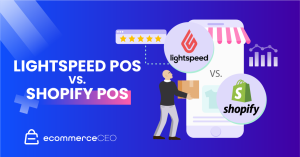Since the onset of the COVID-19 pandemic, there’s been an unprecedented surge in ecommerce, coupled with several changes in consumers’ shopping behaviors.
McKinsey & Company refers to this shift as “The Quickening” — highlighting how the U.S. experienced 10 years’ worth of ecommerce growth in just the first three months of 2020.
In an effort to understand the latest consumer trends and preferences in this rapidly evolving marketplace, Salsify surveyed more than 4,000 shoppers in France, Germany, Great Britain, and the U.S.
Read on for an overview of Salsify’s key findings regarding the long-term impacts of the pandemic on consumer behavior — and some tips on how brands and retailers can adapt accordingly to win on the digital shelf.
How Shopping Behaviors Have Changed
1. Shoppers Were Impacted by One or More Delays or Stock Shortages at the End of 2021
Unfortunately, it looks like supply chain disruptions are here to stay for the foreseeable future.
According to Salsify’s latest consumer research, 66% of U.S. shoppers, 53% of German shoppers, 52% of British shoppers, and 43% of French shoppers were impacted by one or more of the following delays or stock shortages at the end of 2021:
- Lower than average staffing;
- Driver shortages;
- Supply chain shortages; and
- Delayed items from outside the country.
Of all these factors, supply chain shortages were the most prevalent for all four markets. Forty percent of U.S. respondents, 28% of British respondents, 29% of German respondents, and 19% of French respondents have been impacted by these shortages.
2. More Consumers Are Shopping Online for Groceries Than Ever
The grocery industry experienced a massive shift as a result of the pandemic.
Prior to the onset of the health crisis, about 39% of shoppers in France had never bought groceries online, and the numbers were even higher in Great Britain, the U.S., and Germany — 55%, 67%, and 70%, respectively.
When asked how their grocery shopping habits have changed, a portion of the respondents cited above (16% of those British shoppers, 15% of those U.S. shoppers, 11% of those French shoppers, and 10% of those German shoppers) indicated that they expect to buy their groceries exclusively online in 2022.
3. Consumers Sought Low Prices and Better Delivery During the Pandemic
When respondents were asked which factors determined a change in their retailer and brand preferences during the pandemic, “discounts and offers” and “free delivery and returns” topped the list across all four markets.
Other top factors included “quick delivery methods” (34% of U.S. shoppers, 35% of French shoppers, and 36% of British shoppers claimed this impacted their preferences) and “reliable courier” (21% of German shoppers claimed this impacted their preferences).
How Retailers and Brands Can Win Modern Consumers
1. Focus On Developing a Holistic Omnichannel Retail Strategy
While more consumers are moving to ecommerce, brick-and-mortar shopping is still alive and well.
Omnichannel experiences are one of the top 2022 ecommerce trends. In order to win on the digital shelf, today’s brands and retailers must provide a cohesive, engaging experience across all touch points.
By developing a holistic omnichannel strategy, you can gain deeper insights into customers’ needs, expectations, and behaviors. Armed with this data, you can create targeted marketing campaigns, offer personalized shopping experiences, and provide customers with increasingly relevant product information.
When customers feel understood and appreciated, they’re more likely to convert and become loyal to your brand.
2. Optimize Product Content to Meet Modern Grocery Consumers’ Expectations
Product pages are crucial for grocery brands and must serve the entire customer buying journey. All elements — from product descriptions to product images to customer reviews — should be optimized to enhance the shopping experience.
Wondering how to get started? The first step is to unify all your data (i.e., product data, customer data, and business data) into one place.
By creating a single source of truth for data, you can make sure information is consistent, accurate, and up-to-date on all channels. Your teams across departments can also have a central hub to access data and make changes instantly when needed.
3. Increase Inventory Visibility Across the Supply Chain
Over the last two years, supply chain disruptions have made it increasingly challenging for brands and retailers to meet consumer demands. In order to set the right expectations with shoppers, you need increased supply chain visibility. With centralized data, you can better anticipate supply chain issues and arm go-to-market teams with the ability to adjust product availability.
For example, a solution for inventory management for the digital shelf can provide inventory signals like stock-outs, delays, or surpluses that help inform merchandising strategies. This type of solution can link experience with inventory so you’re always aware of the current state of customer demand — empowering you to protect sales during peak months.
Join our upcoming webinar for more key insights from the 2022 Salsify Consumer Research Report.



